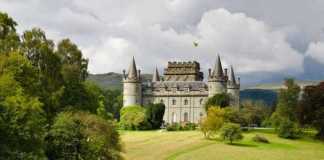Centuries of Byzantine and Ottoman history furnish Istanbul with dreamy mosques, grand churches, fairytale palaces, bustling souks and an exotic ambience. Tick these Istanbul landmarks off your bucket list.
Contents
Istanbul Landmarks
Top Tours
- Istanbul: Bosphorus Dinner Cruise and Show with Private Table – most popular **
- Istanbul: Full-Day Highlights Tour with Guide and Lunch – discover the secrets of the city.
- Istanbul: Basilica Cistern Tour and Skip The Line with Guide – learn about Istanbul’s hidden history.
Famous Istanbul Landmarks
1- Grand Bazaar
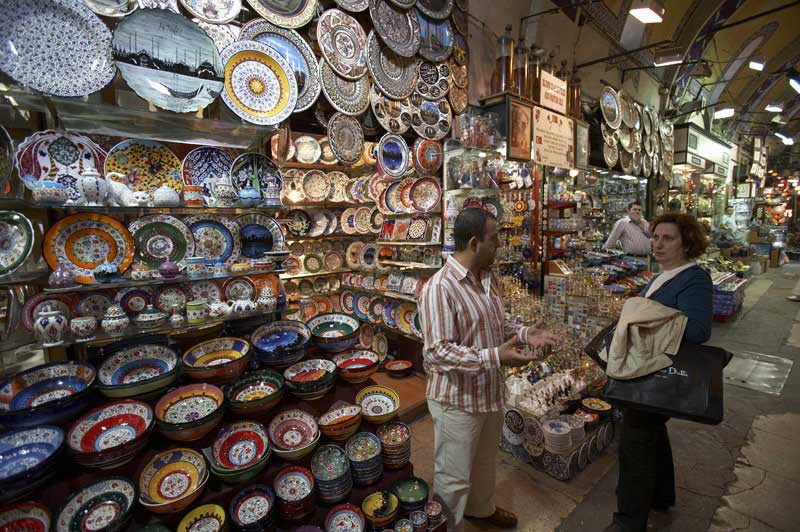
Of all the landmarks to visit in Istanbul, the Grand Bazaar is a shopaholic’s Mecca.
The labyrinth of domed roofed laneways is virtually a city within a city with mosques, banks, cafés, restaurants and over 4000 shops.
The oldest part of the bazaar was built by Sultan Mehmet II after he conquered Constantinople in 1444.
Wander around the maze, and you’ll find leather coats, jewellery and carpets along with souvenirs like pretty glass lamps, replica Ottoman weapons, mother-of-pearl mirrors and water pipes.
Your main problem will be what to buy and how to carry it all home.
Recommended tour: Istanbul: Grand Bazaar Shopping Experience with a Local
2- Spice Bazaar
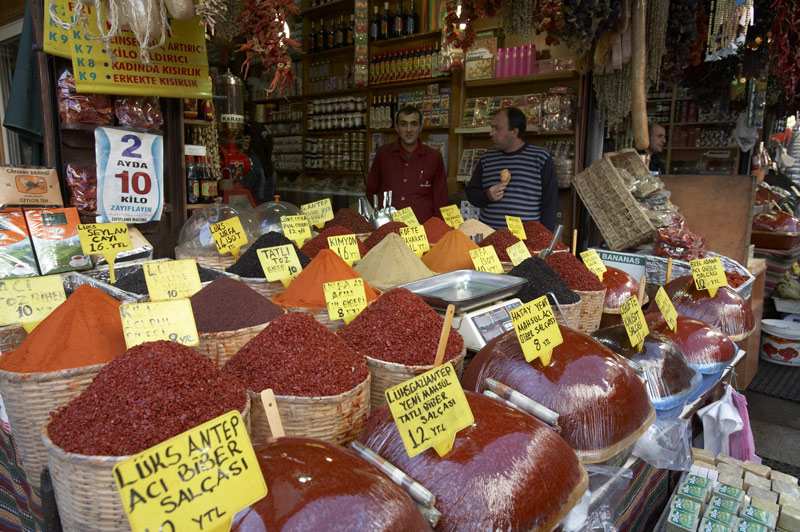
Nuts, dates and dried fruit, buckets of colourful powdered spices, mysterious herbal love potions, Turkish Viagra and fragrant oils are some of the things you can fill your shopping basket with at Istanbul’s Spice Bazaar.
The bazaar is one of the most interesting places to visit in Istanbul and was once the last stop along the legendary Silk Road. It was constructed in 1663 to generate funds for the adjacent Yeni mosque.
It is often referred to as the Egyptian Bazaar because spices were once imported from Egypt.
3- Topkapi Palace
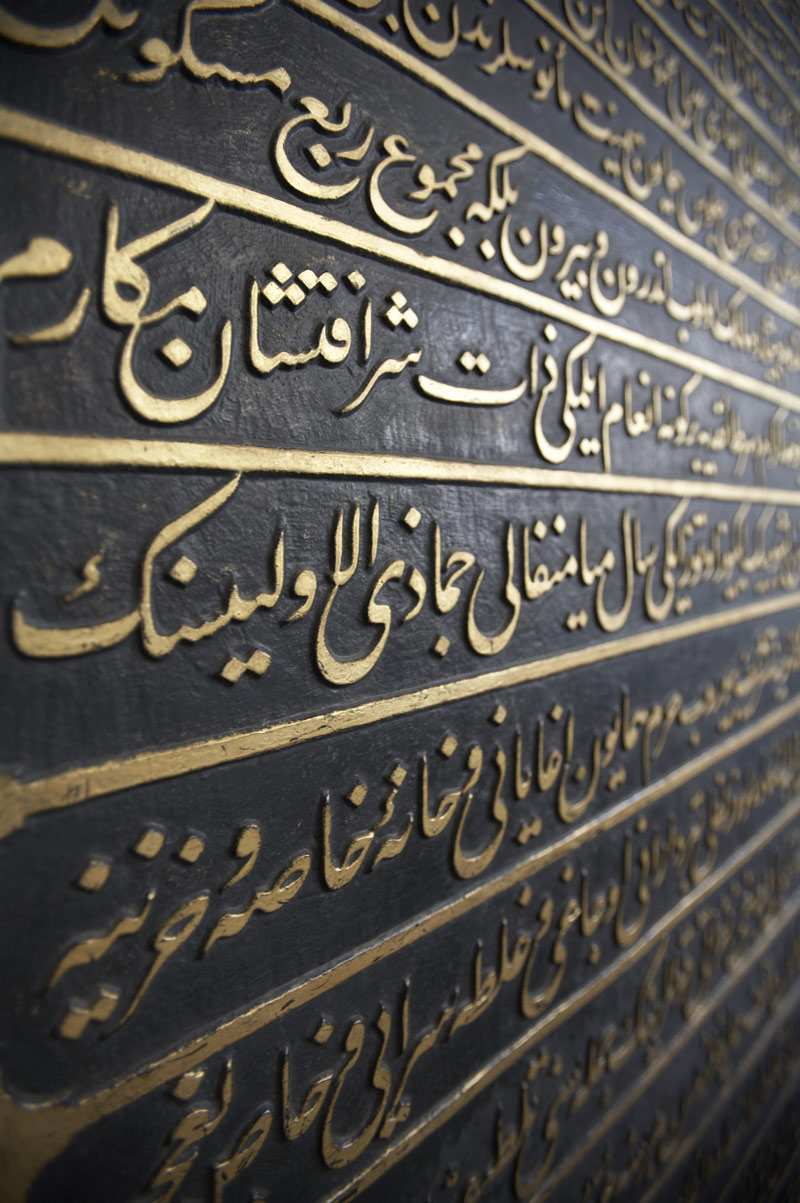
One of the most intriguing historical landmarks in Istanbul is the Topkapi Palace.
The marbled halls and mosaic courtyards of the Topkapi Palace echo legends of sultans, slaves, eunuchs and court treasures.
Among the more colourful sultans were Selim the Sot, who drowned in his bath after drinking too much champagne and Ibrahim the Mad, who lost his mind after being locked up for four years in the palace kafes (cage).
Built in 1453 by Mehmet II, the Topkapı Palace was home to the sultans until the 19th century.
The palace treasury displays riches from Ottoman conquests.
Wander through the treasury rooms to admire the bejewelled sword of Suleyman the Magnificent, the Topkapi Dagger (with three enormous emeralds on its hilt) and the Kasikci (Spoonmaker’s) Diamond (a massive teardrop-shaped 86-carat rock surrounded by smaller stones).
Recommended tour: Istanbul: Topkapi Palace Guided Tour and Skip The Line
4- Blue Mosque
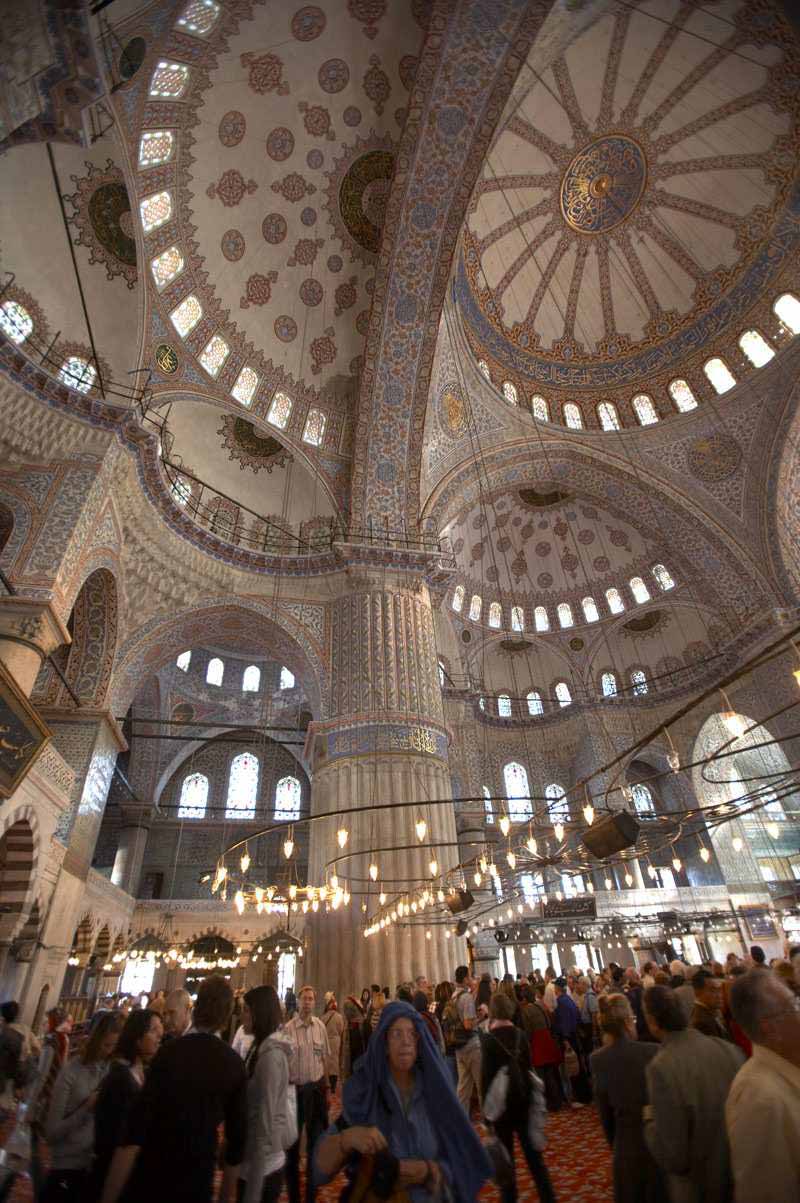
The Mosque of Sultan Ahmet (better known as the Blue Mosque), with its dreamy curves, controversial six minarets and blue-and-white tiles, is one of Istanbul’s most noticeable landmarks.
Sultan Ahmet I was hammered with criticism for presuming to build a mosque with the same number of minarets as the mosque in Mecca’s Kaaba.
The wily sultan overcame opposition by paying for a seventh minaret at the Mecca mosque.
The Blue Mosque is a working mosque where prayers are conducted five times a day.
For the best external view of the mosque, visit the nearby Hippodrome first.
The Hippodrome was built by the Romans around 200AD as a venue for chariot racing and was the centre of life in Byzantine Constantinople for over 1,000 years.
It is now a public square dominated by an Egyptian obelisk built in Egypt in 1500BC. And one of the landmarks in Istanbul that every traveller should put on their bucket list.
Recommended tour: Istanbul: Blue Mosque and Hagia Sophia Small-Group Tour
5- Aya Sofya
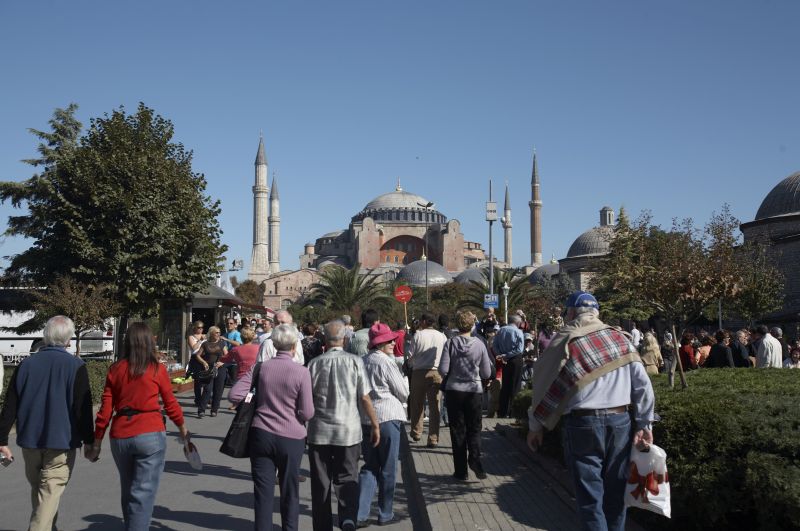
Aya Sofia is one of the most amazing Istanbul landmarks and an icon that was the largest cathedral in the world for almost 1000 years before it was converted into a mosque and then a museum.
Completed in 537 by Emperor Justinian I (527-565), the Aya Sofya (known as Haghia Sofia in Greek, Sancta Sophia in Latin or Church of the Divine Wisdom) was one of Christendom’s greatest houses of worship.
In 1453, Mehmet II converted it into a mosque; in 1935, Mustafa Kemal Atatürk (founder of the Turkish Republic) proclaimed it a museum.
Inside Aya Sofya, there are magnificent mosaics, massive doors, stone ramps and an awe-inspiring dome.
Recommended tour: Hagia Sophia: Entry with Guided Tour
For more amazing European Landmarks, read:
- 30 Spain Landmarks
- 20 Switzerland Landmarks
- 22 Germany Landmarks
- 35 London Landmarks
- 30 France Landmarks
- 20 Italy Landmarks
- 20 Greece Landmarks
- 20 Russia Landmarks
- 20 Scotland Landmarks
- 20 Ireland Landmarks
- 21 Wales Landmarks
- 20 Turkey Landmarks
- 20 England Landmarks
- 20 Hungary Landmarks
- 21 Romania Landmarks
- 20 Ukraine Landmarks
- 20 Athens Landmarks
- 20 Rome Landmarks
- 20 England Landmarks
- 20 Portugal Landmarks
- 20 Poland Landmarks
- 20 Iceland Landmarks
- 20 Bulgaria Landmarks
- 21 Croatia Landmarks
- 20 Bulgaria Landmarks
- 20 Austria Landmarks
- 21 Finland Landmarks
- 20 Sweden Landmarks
- 20 Denmark Landmarks
- 20 Belgium Landmarks
- 20 Netherlands Landmarks
- 20 Barcelona Landmarks
- 21 Czech Republic Landmarks
- 20 Landmarks in Paris
- 20 Landmarks in Liverpool
- 10 Istanbul Landmarks
6- Basilica Cistern
Basilica Cistern is the largest of several hundred water cisterns that lie beneath the city.
The cistern was built during the days of the Byzantine Empire by Justinian I and was the water reservoir for the palace.
Its 336 columns and cathedral ceilings are a sight to behold. It is an astonishing engineering feat, especially considering the lack of modern machinery available during the era when this grand structure was built.
The two columns in the north-western corner are supported by large carved Medusa heads.
Recommended tour: Istanbul: Basilica Cistern Tour and Skip The Line with Guide
7- Istanbul Modern
The Istanbul Modern museum showcases works of prominent and emerging Turkish artists.
The photographic exhibition on the ground floor is especially captivating and displays recently commissioned works of the Galata Bridge.
The museum’s permanent exhibition “Modern Experiences” highlights the development of painting from the 19th century to the 1940s during the days of the Ottoman Empire and the Turkish Republic.
Recommended tour: Istanbul: Full-Day Small Group City Highlights Tour
8- Turkish Hamams
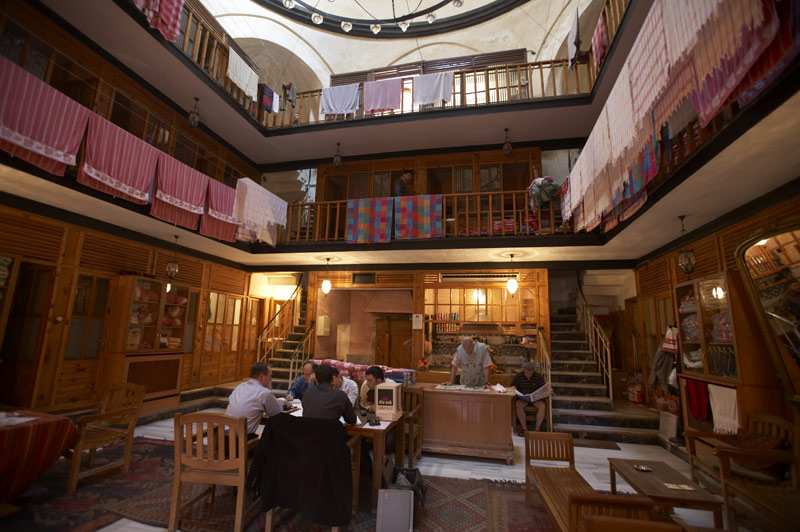
The hamam (or traditional Turkish bath) evolved from the Roman tradition of public bathing as a place to cleanse both body and soul.
Throughout history, men would gather to talk about politics and sport, while women used it as a venue to scout for suitable wives for their sons.
Mahmut I built the Cagaloglu Hamami to finance the construction of his library near the Aya Sofya.
Another historical Hamam is Çemberlitas Hamami.
Recommended tour: Istanbul: Turkish Hammam Body Scrub, Bath and Private Massage
9- The Bosphorus
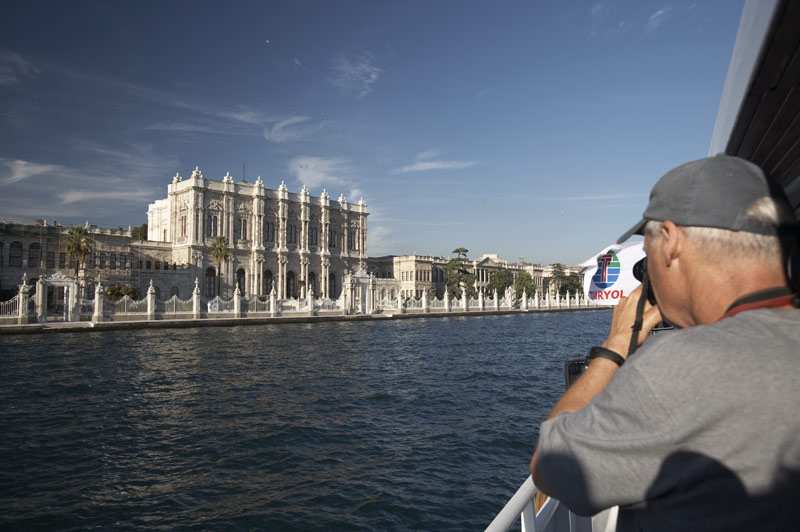
Catch the ferry across continents from the Eminonu terminal on the European side to the Kadikoy district on the Asian side.
Crossing the Bosphorus at dusk offers fairytale views of many of the city’s main sights, including the Suleymaniye Mosque, Galata Tower, Aya Sofya, along with the majestic walls of the Topkapi and Dolmabahce Palaces.
Recommended cruises:
- Istanbul: Bosphorus Sunset Cruise with Drinks and Canapés
- Istanbul: Bosphorus Dinner Cruise & Show with Private Table
10- Tesvikiye district
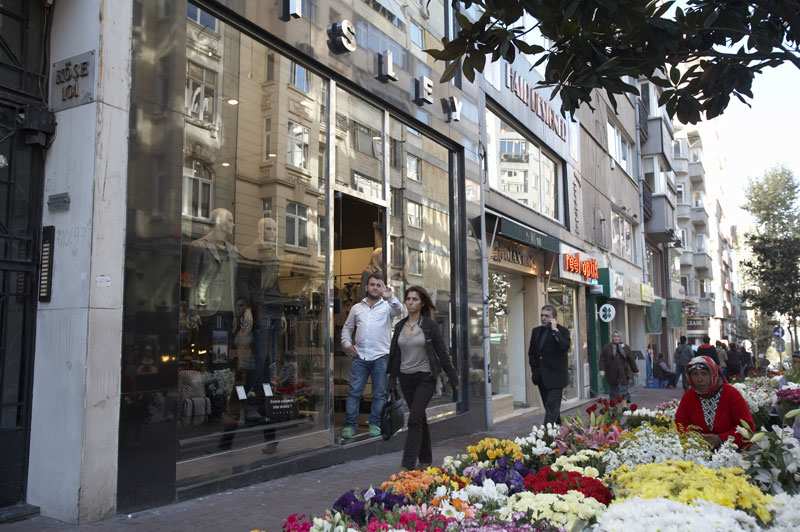
Nisantisi and Tesvikiye districts are an enclave for Istanbul’s top fashion stores.
Istanbul’s most well-known young fashion designer is Gonul Paksoy (Atiye Sokak 6A, Tesvikiye), whose boutique has a range of unique handmade velvet slippers, silk overcoats, embroidered purses and tribal-style jewellery.
Also read:
- 20 Landmarks In Turkey
- 10 Istanbul Landmarks
- 20 Things To Do In Istanbul At Night
- Exploring The Spice Bazaar, Istanbul
- Exploring Istanbul Grand Bazaar
- Turkish Hamam Experience In Istanbul
- 20 Turkish Drinks To Try
- 20 Beaches In Turkey
- When Is The Best Time To Visit Turkey?
- Remembering The Battle of Gallipoli
- 20 Things To Do In Turkey
- 20 Resorts In Turkey
- 20 Turkiye Cities
- 20 Turkiye Tours
- 20 Things Turkiye Is Famous For
Istanbul is a fascinating city to explore and most people who work in the popular tourist spots will speak English. But if you’re planning a trip to Turkey, it’s useful to know a few phrases in the local language. Here are some handy Turkish phrases to help you get around.
Plan Your Trip

Rent A Car – Find the best car rental rates at Discover Cars. They compare car hire companies to provide you with the best deal right now.

Find A Hotel – If you’re curious about this article and are looking for somewhere to stay, take a look at these amazing hotels.
